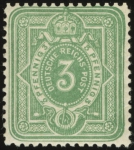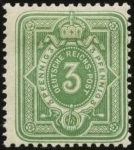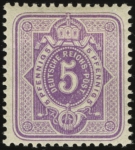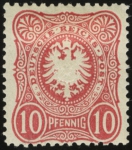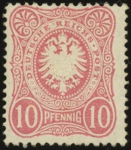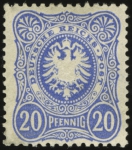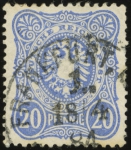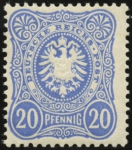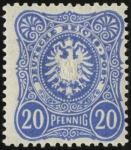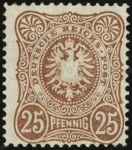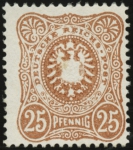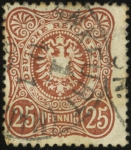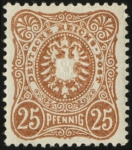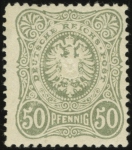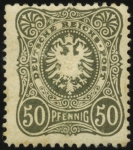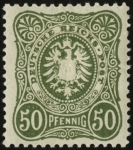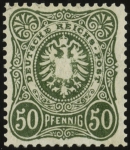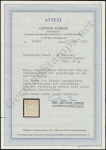“PFENNIG” Issues
Beginning in 1880, Germany issued this series of stamps containing the numeral values in ovals. Of note, they feature the word “PFENNIG” without an “E”, unlike MiNr. 31-36 and MiNr. 38.
The early (“I” suffix, up to about 1886) and late (“II” suffix, after about 1886) variants of these issue can be distinguished by the following:
“I” Suffix — up to approximately 1884, colors are more matte finish, and gum is yellowish with fine cracks. Up to approximately 1886, there are wide variations in paper and colors.
“II” Suffix — after late 1886, gum, paper, and colors are variable, but typically with somewhat glossy, rich colors in a smoother appearance and mostly white, glossy gum.
“PFENNIG” Issues
Beginning in 1880, Germany issued this series of stamps containing the numeral values in ovals. Of note, they feature the word “PFENNIG” without an “E”, unlike MiNr. 31-36 and MiNr. 38.
The early (“I” suffix, up to about 1886) and late (“II” suffix, after about 1886) variants of these issue can be distinguished by the following:
“I” Suffix — up to approximately 1884, colors are more matte finish, and gum is yellowish with fine cracks. Up to approximately 1886, there are wide variations in paper and colors.
“II” Suffix — after late 1886, gum, paper, and colors are variable, but typically with somewhat glossy, rich colors in a smoother appearance and mostly white, glossy gum.

